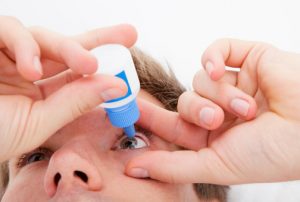 Glaucoma affects over three million Americans today, with only half of them aware they have the condition. It is a progressive eye disorder that, if left untreated, can cause blindness. Even if treatment is properly initiated, approximately 10 percent of patients will still experience vision loss.
Glaucoma affects over three million Americans today, with only half of them aware they have the condition. It is a progressive eye disorder that, if left untreated, can cause blindness. Even if treatment is properly initiated, approximately 10 percent of patients will still experience vision loss.
Much of the reason many people, especially the elderly, still develop vision loss despite getting treatment is the fact that eye drops are used. This can make it difficult for the older population to adhere to intensive eye drop schedules.
Advertisement
Using eye drops for the treatment of glaucoma may soon be a thing of the past, as scientists have developed an implantable device that promises to simplify how glaucoma drugs are administered.
A leading cause of blindness in America
Glaucoma is a progressive condition. Over time, pressure build-up within the eyes can lead to optic nerve damage. Intraocular pressure—the pressure within the eye—damages the cranial nerve responsible for sending the images you see to the brain to be interpreted.
When this nerve becomes damaged, it can lead to significant sight impairment or even blindness in just a few years. One of the most troubling aspects of glaucoma is that in its initial phases, it may not present with any symptoms, and it is not until you start to notice problems with your vision that glaucoma cases are diagnosed.
It is recommended that those over 40 years old who have a family history of glaucoma have a complete eye exam from an eye doctor every one to two years. This is especially important if you suffer from a health condition like diabetes or high blood pressure, as these may also affect eye health.
A new way of delivering medication
The device aims to reduce eye pressure and has seen success in preliminary animal studies. It is essentially the same glaucoma drugs being administered, but in a different manner. The scientists used biodegradable films and “sandwiched” anti-glaucoma medication between them.
Advertisement
The device is then placed on the eye, which slowly releases medication as it dissolves, being effective for approximately six months.
“While there have been important advances in eye drop formulations, our device substantially reduces the burden of patient compliance in a safe and effective way. Next steps will involve scaling up, developing device fabrication procedures that comply with current good manufacturing practices, and testing the device in larger animals, before moving on to clinical trials,” said Tejal Desai, Ph.D., chair of the Department of Bioengineering and Therapeutic Sciences, a joint department of the UCSF Schools of Pharmacy and Medicine.
Related: Normal-tension glaucoma: Causes, symptoms, and treatment
[adstoappear]